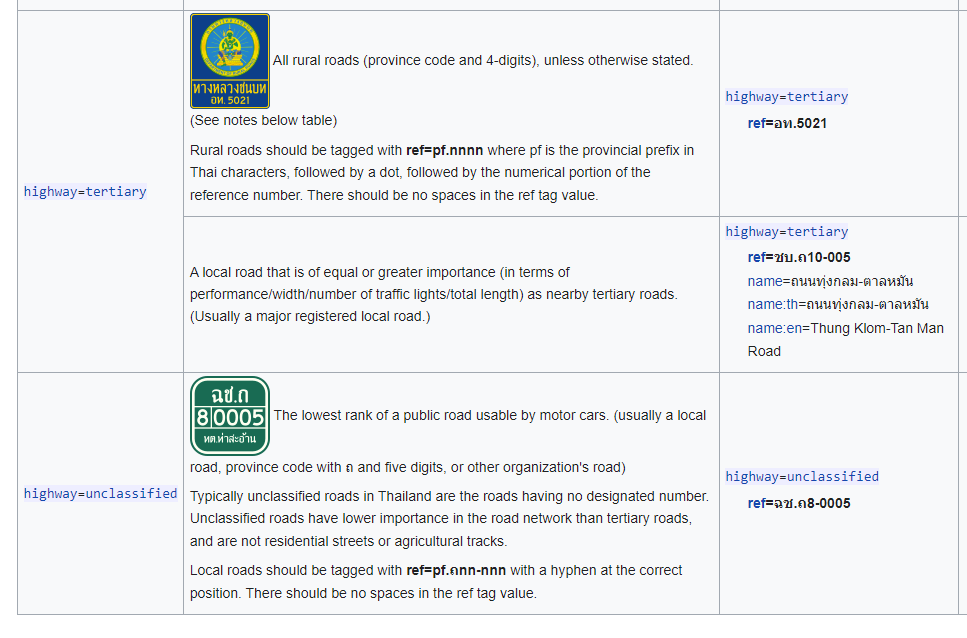Problem
Under the current scheme, all registered local road ref (xx.ถxx-xxx) should be tagged as ref=* even if it is not signposted. This would clutter both routing and rendering with a useless ref. Inconsistencies can also be seen. The urban area is an excellent example, as some municipalities have registered even for small sois, while some others have yet to register any road at all. However, 99% of the municipality does not have any reassurance marker signs and has no plans to do so. Only the road name is used for communication and it is usually signposted.
For the international approach, unsigned_ref=* is currently used for administrative ref that are not intended to be recognized by drivers (but don’t need to have no sign at all). official_ref=* is also used, but it is less common and has no clear distinctions.
Solution
How do you think we should handle this problem?
- Tag all local roads’ ref as unsigned_ref=*. (easiest to do, but will lose a lot of information)
- Tag only local roads with a reassurance marker with ref=* , else unsigned_ref=*. (situation on ground is important, and can be changed easily)
- Tag only local roads with no name* with ref=* , else unsigned_ref=*. (the name have to be researched)
- 2+3, if the road is signposted with a reassurance marker, always tag it with ref=*. The name have to be checked only if there is no reassurance marker. (giving at least some information to a routing software, for a rural road with no name, might be better than nothing being displayed)
(*Officially, every registered local road must have a designated name in the DRR database, however these “name” just describe the start and end of the route and are never used for addressing. This kind of “name” should not be considered a name.)
